This is the new smart. Not just the car, which is called smart #1 (pronounced as hashtag one), but the company itself. Those who are old enough might remember the ‘smart car’ from the 90s, a Mercedes-Benz and Swatch collab that resulted in the iconic ForTwo, the larger ForFour and the Roadster sports car – remember those funky little things?
Nothing remains cool forever though, and smart’s hot start petered out to a mere existence in the 2010s. Then came Geely in 2019, the ambitious Chinese carmaker taking up half of ownership in a 50:50 JV with Mercedes-Benz. It was decided from the start that the Germans will be in charge of design, with Geely providing the architecture and engineering.
The ‘new smart’ employs the ‘China-Europe dual-home’ strategy, while targeting regions with high potential. Southeast Asia is one of those regions, and Proton – via subsidiary Pro-Net – is the distributor for the smart brand in Malaysia and Thailand. smart Malaysia CEO Zhang Qiang says Malaysia is a ‘priority market’ for the smart brand. As such, we’re the first country in ASEAN to get the smart #1.
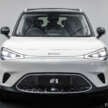
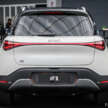
The smart #1 is the first fruit of the new smart era, and it’s making its Malaysian public debut at the paultan.org EVx 2023 event, which is now open to the public at Setia City Convention Centre. smart Malaysia had a media preview earlier this week at Proton’s design studio and test track, and the images you see here are from Tuesday. There’s an embargo in place for the #1 interior, so we can only show you the cabin next month.
The new smart is an EV-only brand, and the #1 sits on Geely’s Sustainable Electric Architecture (SEA), a modular EV platform that also underpins the likes of the Lotus Eletre (just across the hall at EVx), Zeekr 001 and Polestar EVs. The SEA2 version of the base is shared with the Zeekr X and the recently-revealed Volvo EX30. Solid bones fit for premium makes.
As mentioned, smart design is handled by Mercedes-Benz, and the #1 is Stuttgart’s template for the new brand, designed to appeal to customers in both of smart’s home markets. Of course, it’s an SUV, seeing how universally popular the bodystyle is, but the #1 doesn’t look like a typical SUV, but more like a large hatchback to these eyes. That alone makes it rather unique, like the how the Hyundai Ioniq 5 doesn’t follow size/styling norms.
The #1 looks a fair bit larger in the metal than I expected, and a look at the spec sheet reveals why it looks more substantial than a typical B-segment SUV.
That illusion is from the smart’s width and long wheelbase – at 1,822 mm, the #1 is 32 mm wider than a Honda HR-V, despite being 115 mm shorter than the ICE SUV. The stout look also comes from the EV’s very long wheelbase of 2,750 mm (140 mm longer than HR-V), and large wheels (19’s) at each corner. Literally, because there’s virtually no overhang at either end. This square base allows the #1 to be tall (1,636 mm, 46 mm taller than HR-V) without looking awkward.
The #1 has a ‘grilleless’ face and organic form that’s rather typical of EVs (they always remind me of sea creatures) and a rear end featuring the must-have full-width horizontal LED bar. Looks a bit like a Mercedes EQ SUV, don’t you think? Not a bad thing, of course.
Speaking of LEDs, the front lights are also connected by a light bar, while the grille is illuminated. There’s a welcome light show when the car is switched on, and the grille lights can be made to ‘dance to the beat’ of the music being played. The smart logos on the rear pillars also light up in the dark.
Interesting design details to look out for are the flush door handles, which open up frameless door windows. The floating roof effect is now very common, but smart’s rendition is ‘quite 3D’ – a separate and distinct layer sits on top of the base like a helmet – see the rear pillars. This ‘layer’ would be even more obvious with a non-black roof. Speaking of roofs, there’s a huge glass roof that smart calls ‘panoramic halo roof’. The smart key is like a hockey puck with proximity auto lock/unlock.
The #1 Premium you see here is powered by a single rear motor with 272 PS (200 kW) and 343 Nm of torque going to the rear wheels. That’s good for a 0-100 km/h sprint time of 6.7 seconds. Top speed is capped at 180 km/h. The high-performance #1 Brabus adds on a front motor to make it AWD, 428 PS (315 kW), 543 Nm and 3.9 seconds in the benchmark sprint – the Bottrop-tuned EV isn’t here at EVx, but it’s in smart Malaysia’s plans, so stay tuned.
The #1’s battery is a 66-kWh lithium nickel manganese cobalt oxide (NMC) unit providing 440 km of WLTP-rated range (Brabus 400 km). The maximum charge rate is 150 kW DC, which means that if paired to a compatible fast charger, the #1’s battery can go from 10-80% state of charge (SoC) in 30 minutes. Now, there’s always plenty of focus on DC fast charging, but an EV’s primary source of juice should be AC, and the #1 stands out in the field with 22 kW AC when most rivals max out at 11 kW.
Having an onboard 22 kW AC charger makes a big difference – smart Malaysia says that going from 10-80% SoC takes just three hours. This means that you can have a long lunch break or rest time at home and when you’re done, the EV is replenished, all without paying DC rates. It gives an owner added flexibility.
How rare is this? We checked, and only the ’55 quattro’ variants of the Audi Q8 e-tron/e-tron GT and the Porsche Taycan support 22 kW AC charging in Malaysia. Most EVs on sale, including the BMW i7, Mercedes EQS and Volvo XC40 Recharge Pure Electric are on 11 kW. More affordable EVs like the BYD Atto 3 and Ora Good Cat come with AC chargers capable of handling around 7 kW or less. It’s quite a highlight then, the #1’s 22 kW AC onboard charger.
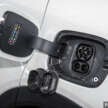
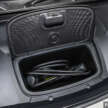
This Premium variant is loaded with kit and is likely to be the best seller of the range, which will have a base model and the dual-motor Brabus at the top. Everything one would expect from a range-topping premium exec is here, and perhaps more.
On the outside, you’ll find Matrix LED adaptive headlamps, front/rear sequential signals, illumination on the front grille/door handles/side logo, courtesy lights on the side mirror base, 19-inch ‘Rotor’ alloys with 235/45 tyres, a panoramic ‘halo’ roof, roof rails, auto dimming and dipping (when reversing) heated side mirrors and a powered tailgate (kick to open).
We can’t show you live pics of the interior yet, but the T-shaped cockpit with a very high centre console topped by a 12.8-inch standalone touchscreen in landscape. To its right is a slim 9.2-inch instrument cluster supplemented by a 10-inch colour head-up display (HUD), which shows all the essentials, including navigation. There’s also Android Auto and Apple CarPlay, Qi wireless charging, and wait for it – a 13-speaker 640W sound system by Beats.
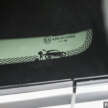


By the way, although the #1 may be a CBU import, smart Malaysia is collaborating with others to develop local telematics services to support the vehicle control, navigation and the smart customer app. We’re told that this localisation will include locations of the all the chargers under the top charging network operators in Malaysia, which sounds like very good help.
On the comfort side of things, you’ll find leather, ventilated and powered front seats with memory, courtesy driver’s seat (moves back automatically for easier exit/entry), front passenger seat adjustment via touchscreen (for the driver), dual-zone auto air con with rear vents, N95 air con filter and a cooled centre armrest storage (piped in from AC). Of course there’s ambient lighting – you can choose from 64 colours and different top and bottom combos, Mercedes-style. There’s a full ADAS driver assist suite too, of course.
Last but not least – if an EV is to work well as a daily car – is space and practicality. The width and high roof of the #1 is apparent upon entry, and space is generous at the back, as is seat comfort. The rear bench has 130 mm of 60:40 sliding adjustment if you want to extend the boot length; capacity varies between 323 to 411 litres, or 986 litres with the rear seats folded flat (there’s also a ski hatch). Under the hood is a small 15L frunk, which might be useful for pungent food, but only small packets.
The media preview included a sampling session at Proton’s internal test track, where we tested the Premium and Brabus variants on the banked oval and performed some figure 8 exercises. Starting with the Brabus’ explosive acceleration (I saw 180 on the dash) and hilarious fake ICE noise meant that the subsequent stint in the Premium was a calm affair, but there aren’t many EVs that we’d call slow.
There wasn’t much to take away from the short drive, but we got to test the #1 at high speed, and the tall hatch has good stability and feels ‘solid’ on the move, with the steering having good weight. This sounds basic, but if confirmed on regular roads, the #1 would already be dynamically ahead of a few EVs on the market. The first impressions bode well and we’re looking forward to a proper drive.
So far, we’ve been ignoring the elephant in the room and his name is Mr. Price. Of course, there’s a new EV price yardstick in town, and it made every other player look poorer value overnight, but Tesla is a special case and unique business model. So, what do you think of the smart #1’s package and looks, and in your opinion, what would be a good price for the well-specced Premium and the dual-motor Brabus?
GALLERY: 2023 smart #1 Premium 
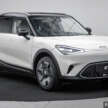

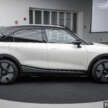
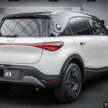



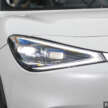
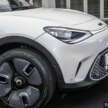
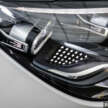
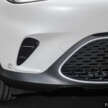


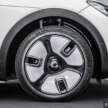


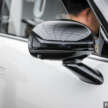


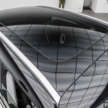


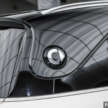





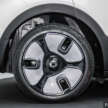
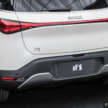
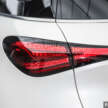

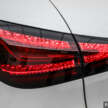
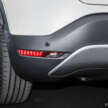
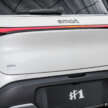
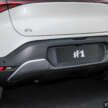
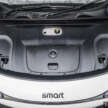
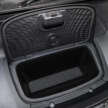

GALLERY: 2023 smart #1 official images 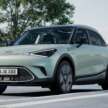

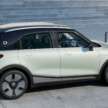
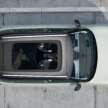
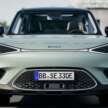
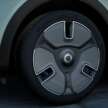

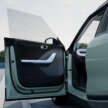

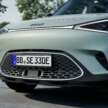
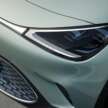
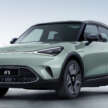

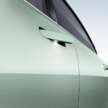
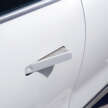
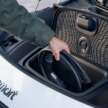
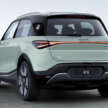

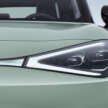
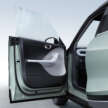
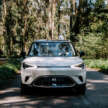

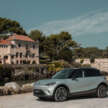
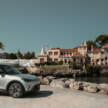

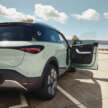
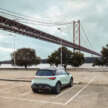


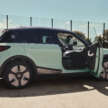

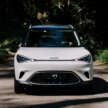
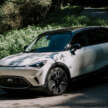


The post 2023 smart #1 EV makes Malaysian debut at EVx – 66 kWh, 440 km range, 22 kW AC, Q4 launch, we drive it! appeared first on Paul Tan's Automotive News.


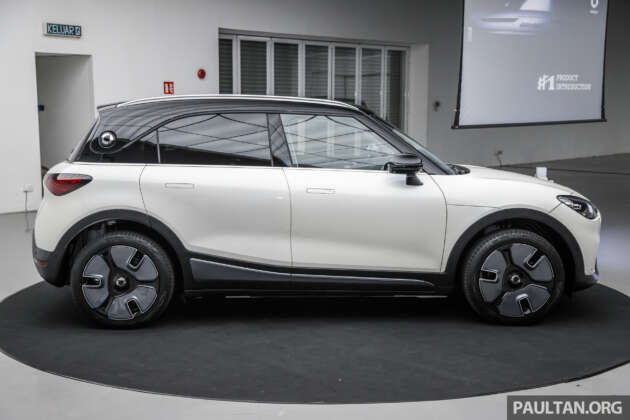
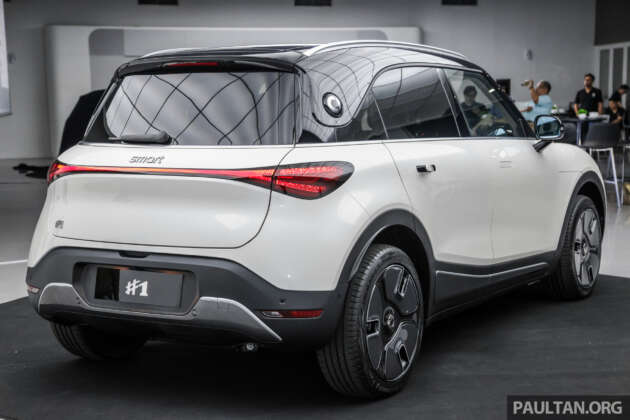

0 Comments